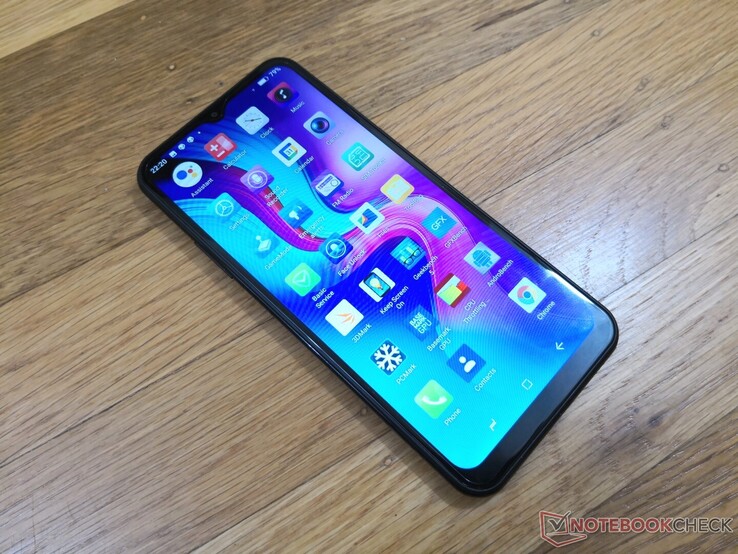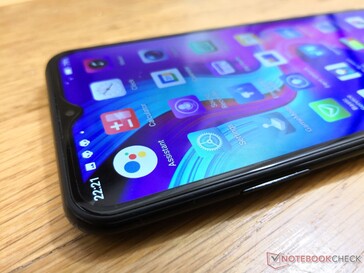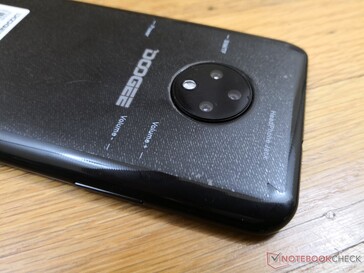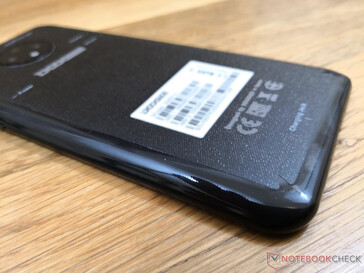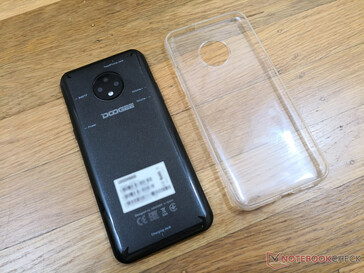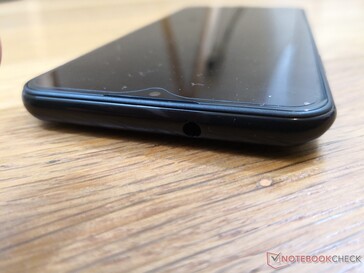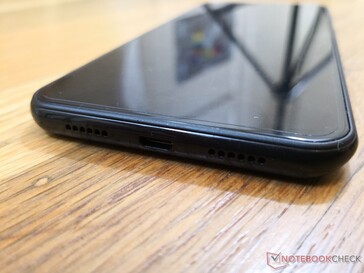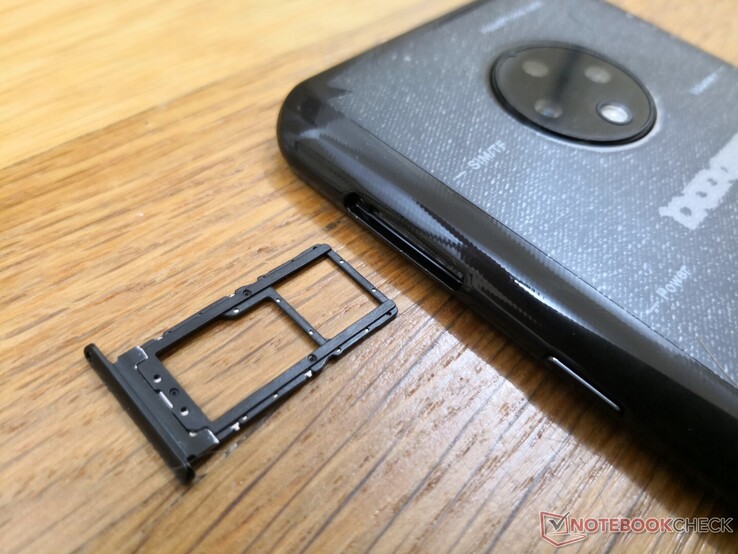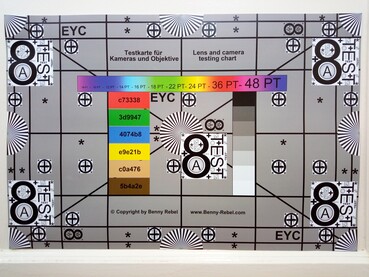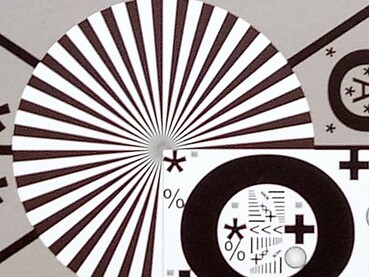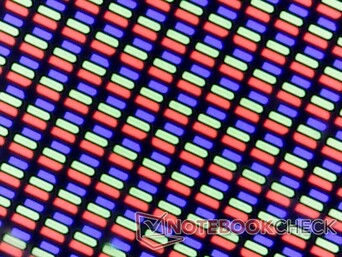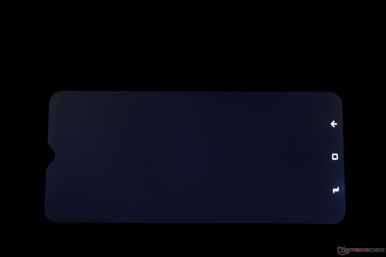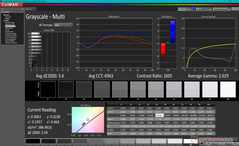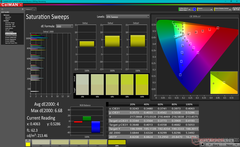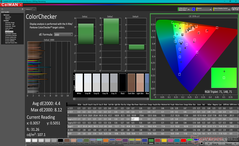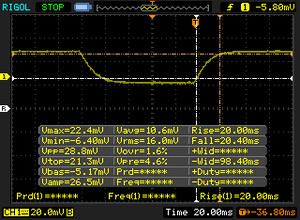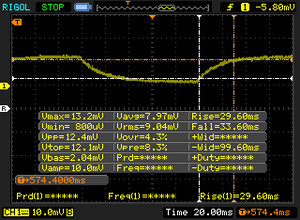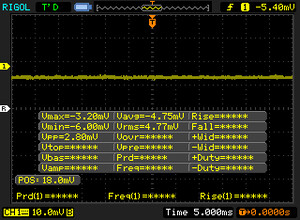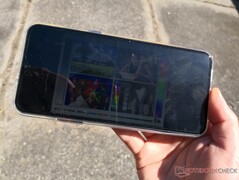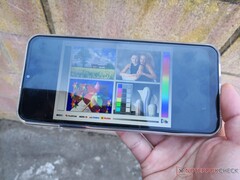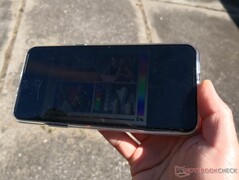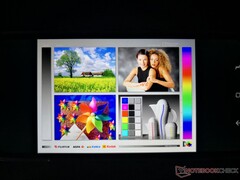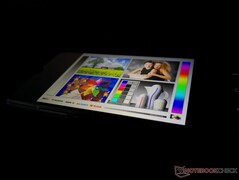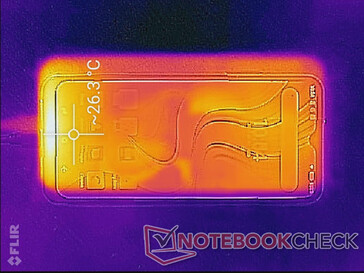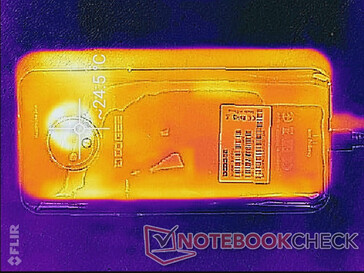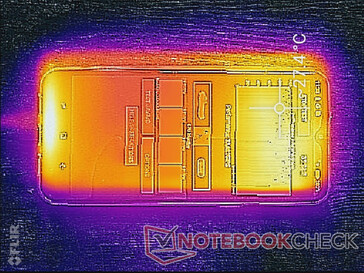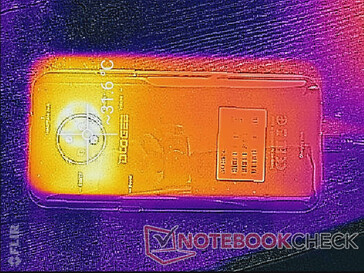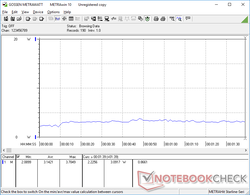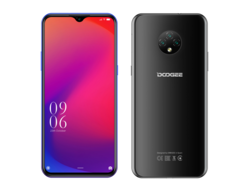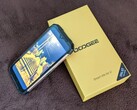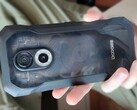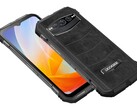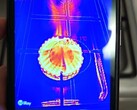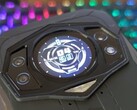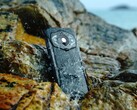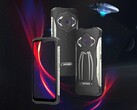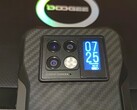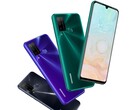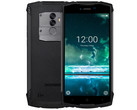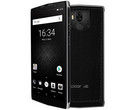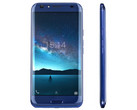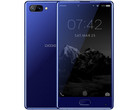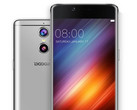Doogee X95 Pro Smartphone Review: Face ID and Android 10 For $100

The Doogee X95 Pro is the slightly pricier version of the already inexpensive X95. For about $20 more, users are getting 2x the RAM and storage and a faster MediaTek Helio A20 processor with the X95 Pro. Everything else remains identical including the triple rear cameras, large touchscreen, and facial recognition login.
Retailers like AliExpress are offering the Doogee X95 Pro for just $80 to $100 USD to make it one of the cheapest Android 10 smartphones available.
More Doogee reviews:
potential competitors in comparison
Rating | Date | Model | Weight | Height | Size | Resolution | Best Price |
|---|---|---|---|---|---|---|---|
| 71.3 % | 04/2021 | Doogee X95 Pro Helio A20 MT6761D, PowerVR GE8300 | 177 g | 8.4 mm | 6.52" | 1600x720 | |
| 87.2 % | 04/2021 | OnePlus 9 SD 888 5G, Adreno 660 | 192 g | 8.7 mm | 6.55" | 2400x1080 | |
| 77.6 % | 04/2021 | Motorola Moto G30 SD 662, Adreno 610 | 197 g | 9 mm | 6.50" | 1600x720 | |
| 82.5 % | 03/2021 | Oppo Find X3 Lite SD 765G, Adreno 620 | 172 g | 7.9 mm | 6.43" | 2400x1080 | |
| 74.5 % | 03/2021 | Blackview A80 Plus Helio P22 MT6762, PowerVR GE8320 | 180 g | 8.8 mm | 6.49" | 1560x720 | |
| 74.6 % | 01/2021 | Motorola Moto E7 Helio G25, PowerVR GE8320 | 180 g | 8.9 mm | 6.50" | 1600x720 |
Case
Build quality is excellent even if most of the case is plastic. The device is firm on all sides and edges with no abnormalities on our unit. It doesn't feel expensive, but it doesn't feel cheap, either.
Connectivity
Micro-USB is present instead of the more common USB-C likely to save on costs. Both charging and data are supported with no video-out feature.
Communication
| Networking | |
| iperf3 transmit AX12 | |
| OnePlus 9 | |
| Doogee X95 Pro | |
| Blackview A80 Plus | |
| Oppo Find X3 Lite | |
| Motorola Moto G30 | |
| Motorola Moto E7 | |
| iperf3 receive AX12 | |
| OnePlus 9 | |
| Oppo Find X3 Lite | |
| Doogee X95 Pro | |
| Blackview A80 Plus | |
| Motorola Moto G30 | |
| Motorola Moto E7 | |
Webcam
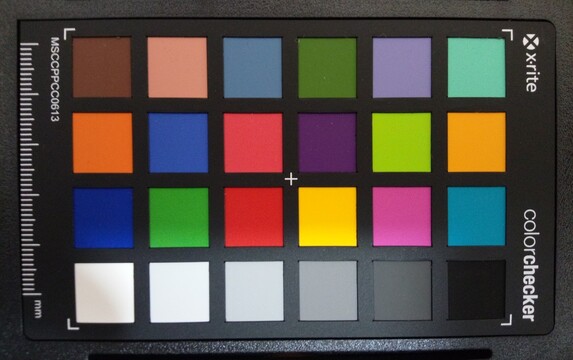
Accessories and Warranty
The retail box includes an AC adapter, Micro-USB cable, and the usual paperwork. Warranty might be somewhat difficult to claim as owners may need to ship overseas.
Display
The large touchscreen is better than expected and it's easily the highlight of the Doogee. Colors don't pop or appear as vivid as on a Samsung Galaxy or Apple iPhone, but they're excellent nonetheless and with a great contrast ratio as well. The slow black-white and gray-gray response times are the main drawback to this display meaning ghosting is very noticeable when scrolling through web pages or icons.
| |||||||||||||||||||||||||
Brightness Distribution: 86 %
Center on Battery: 382.2 cd/m²
Contrast: 2123:1 (Black: 0.18 cd/m²)
ΔE Color 4.4 | 0.5-29.43 Ø5
ΔE Greyscale 3.4 | 0.57-98 Ø5.3
Gamma: 2.03
| Doogee X95 Pro IPS, 6.52, 1600x720 | OnePlus 9 AMOLED, 6.55, 2400x1080 | Motorola Moto G30 LCD IPS, 6.50, 1600x720 | Oppo Find X3 Lite OLED, 6.43, 2400x1080 | Blackview A80 Plus IPS, 6.49, 1560x720 | Motorola Moto E7 IPS, 6.50, 1600x720 | |
|---|---|---|---|---|---|---|
| Response Times | 77% | -7% | 94% | 47% | -11% | |
| Response Time Grey 50% / Grey 80% * | 63.2 ? | 20 ? 68% | 76 ? -20% | 3.2 ? 95% | 30 ? 53% | 61 ? 3% |
| Response Time Black / White * | 40.4 ? | 6 ? 85% | 38 ? 6% | 2.8 ? 93% | 24 ? 41% | 50 ? -24% |
| PWM Frequency | 323.6 | 176.7 ? | 367.6 ? | 178.6 ? | ||
| Screen | 76% | -17% | 25% | -47% | -22% | |
| Brightness middle | 382.2 | 731 91% | 284 -26% | 569 49% | 475 24% | 470 23% |
| Brightness | 357 | 739 107% | 263 -26% | 572 60% | 467 31% | 445 25% |
| Brightness Distribution | 86 | 96 12% | 83 -3% | 97 13% | 84 -2% | 92 7% |
| Black Level * | 0.18 | 0.34 -89% | 0.49 -172% | 0.35 -94% | ||
| Contrast | 2123 | 835 -61% | 969 -54% | 1343 -37% | ||
| Colorchecker dE 2000 * | 4.4 | 0.59 87% | 2.92 34% | 3.2 27% | 6.32 -44% | 5.69 -29% |
| Colorchecker dE 2000 max. * | 8.12 | 1.3 84% | 5.06 38% | 6 26% | 10.75 -32% | 13.4 -65% |
| Greyscale dE 2000 * | 3.4 | 0.9 74% | 3.6 -6% | 4.3 -26% | 7.8 -129% | 3.5 -3% |
| Gamma | 2.03 108% | 2.243 98% | 2.307 95% | 2.23 99% | 2.228 99% | 2.264 97% |
| CCT | 6963 93% | 6573 99% | 6780 96% | 6607 98% | 9152 71% | 7089 92% |
| Total Average (Program / Settings) | 77% /
76% | -12% /
-15% | 60% /
42% | 0% /
-28% | -17% /
-19% |
* ... smaller is better
Display Response Times
| ↔ Response Time Black to White | ||
|---|---|---|
| 40.4 ms ... rise ↗ and fall ↘ combined | ↗ 20 ms rise | |
| ↘ 20.4 ms fall | ||
| The screen shows slow response rates in our tests and will be unsatisfactory for gamers. In comparison, all tested devices range from 0.1 (minimum) to 240 (maximum) ms. » 97 % of all devices are better. This means that the measured response time is worse than the average of all tested devices (21.5 ms). | ||
| ↔ Response Time 50% Grey to 80% Grey | ||
| 63.2 ms ... rise ↗ and fall ↘ combined | ↗ 29.6 ms rise | |
| ↘ 33.6 ms fall | ||
| The screen shows slow response rates in our tests and will be unsatisfactory for gamers. In comparison, all tested devices range from 0.2 (minimum) to 636 (maximum) ms. » 97 % of all devices are better. This means that the measured response time is worse than the average of all tested devices (33.8 ms). | ||
Screen Flickering / PWM (Pulse-Width Modulation)
| Screen flickering / PWM not detected | |||
In comparison: 53 % of all tested devices do not use PWM to dim the display. If PWM was detected, an average of 17933 (minimum: 5 - maximum: 3846000) Hz was measured. | |||
Performance
CPU performance is very slow with Geekbench results that are about half that of the mid-range Qualcomm Snapdragon 662. Even subjectively, most actions come with a slight delay. Opening new Chrome tabs, pressing the Home button, loading web pages, and switching between applications are not nearly as instant as most other smartphones. Medium multi-tasking between several applications is enough to cause momentary freezes and frame rates to chug.
Mozilla Kraken 1.1: Total
WebXPRT 3: Overall
JetStream 1.1: Total Score
| Geekbench 5.5 / Single-Core | |
| Apple iPhone 12 Pro | |
| OnePlus 9 | |
| Oppo Find X3 Lite | |
| Motorola Moto G30 | |
| Nokia 5.4 | |
| Blackview A80 Plus | |
| Doogee X95 Pro | |
| Alcatel 3X 2020 | |
| Average Mediatek Helio A20 MT6761D (134 - 153, n=2) | |
| Wiko View5 | |
| Motorola Moto E7 | |
| Cubot King Kong CS | |
| Geekbench 5.5 / Multi-Core | |
| Apple iPhone 12 Pro | |
| OnePlus 9 | |
| Oppo Find X3 Lite | |
| Nokia 5.4 | |
| Motorola Moto G30 | |
| Alcatel 3X 2020 | |
| Blackview A80 Plus | |
| Wiko View5 | |
| Doogee X95 Pro | |
| Motorola Moto E7 | |
| Average Mediatek Helio A20 MT6761D (421 - 533, n=2) | |
| Cubot King Kong CS | |
| Mozilla Kraken 1.1 / Total | |
| Wiko View5 | |
| Average Mediatek Helio A20 MT6761D (11496 - 11842, n=2) | |
| Doogee X95 Pro | |
| Motorola Moto G30 | |
| Nokia 5.4 | |
| Oppo Find X3 Lite | |
| Apple MacBook 12 (Early 2016) 1.1 GHz | |
| Apple MacBook 12 (Early 2016) 1.1 GHz | |
| OnePlus 9 | |
| Apple iPhone 12 Pro | |
| WebXPRT 3 / Overall | |
| Apple iPhone 12 Pro | |
| OnePlus 9 | |
| Oppo Find X3 Lite | |
| Nokia 5.4 | |
| Motorola Moto G30 | |
| Doogee X95 Pro | |
| Average Mediatek Helio A20 MT6761D (26 - 27, n=2) | |
| Wiko View5 | |
| JetStream 1.1 / Total Score | |
| Apple iPhone 12 Pro | |
| Apple MacBook 12 (Early 2016) 1.1 GHz | |
| Apple MacBook 12 (Early 2016) 1.1 GHz | |
| OnePlus 9 | |
| Oppo Find X3 Lite | |
| Motorola Moto G30 | |
| Average Mediatek Helio A20 MT6761D (21.9 - 22.5, n=2) | |
| Doogee X95 Pro | |
Mozilla Kraken 1.1: Total
WebXPRT 3: Overall
JetStream 1.1: Total Score
* ... smaller is better
Storage Devices
The 32 GB of internal storage is low but thankfully expandable via MicroSD. The slot supports up to 32 GB only, however, for a total of just 64 GB combined.
| Doogee X95 Pro 32 GB eMMC Flash | OnePlus 9 256 GB UFS 3.1 Flash | Motorola Moto G30 128 GB eMMC Flash | Oppo Find X3 Lite 128 GB UFS 2.1 Flash | Blackview A80 Plus 64 GB eMMC Flash | Motorola Moto E7 32 GB eMMC Flash | Nokia 5.4 128 GB eMMC Flash | |
|---|---|---|---|---|---|---|---|
| AndroBench 3-5 | 903% | 138% | 613% | 39% | 13% | 140% | |
| Sequential Read 256KB | 277 | 1872 576% | 214.5 -23% | 953 244% | 286.7 4% | 261 -6% | 288.9 4% |
| Sequential Write 256KB | 118.6 | 739 523% | 190.2 60% | 466.2 293% | 210.8 78% | 101 -15% | 187.2 58% |
| Random Read 4KB | 32.59 | 225.4 592% | 247.4 659% | 194.7 497% | 52.2 60% | 58 78% | 112.1 244% |
| Random Write 4KB | 10.95 | 221.4 1922% | 12.2 11% | 166 1416% | 21.2 94% | 13.5 23% | 68.8 528% |
| Sequential Read 256KB SDCard | 83.3 | 153.8 85% | 82.4 -1% | 81.5 -2% | 85.9 3% | ||
| Sequential Write 256KB SDCard | 61.3 | 81.9 34% | 62.2 1% | 62 1% | 64.1 5% |
GPU Performance
Graphics performance is poor for gaming. Side-scrollers like Armajet run well albeit still not as smooth as we would like while 3D titles like Mario Kart Tour or PUBG Mobile are simply subpar experiences. Users who play 2D games or no games at all won't find this to be a huge issue. 1080p video playback at 60 FPS, for example, is still watchable and mostly smooth with just occasional dips in our experience.
| 3DMark Sling Shot Extreme (ES 3.1) Unlimited | 257 points | |
Help | ||
Emissions
Temperature
(+) The maximum temperature on the upper side is 27.6 °C / 82 F, compared to the average of 35 °C / 95 F, ranging from 21.9 to 56 °C for the class Smartphone.
(+) The bottom heats up to a maximum of 31.8 °C / 89 F, compared to the average of 33.8 °C / 93 F
(+) In idle usage, the average temperature for the upper side is 25 °C / 77 F, compared to the device average of 32.7 °C / 91 F.
Speakers
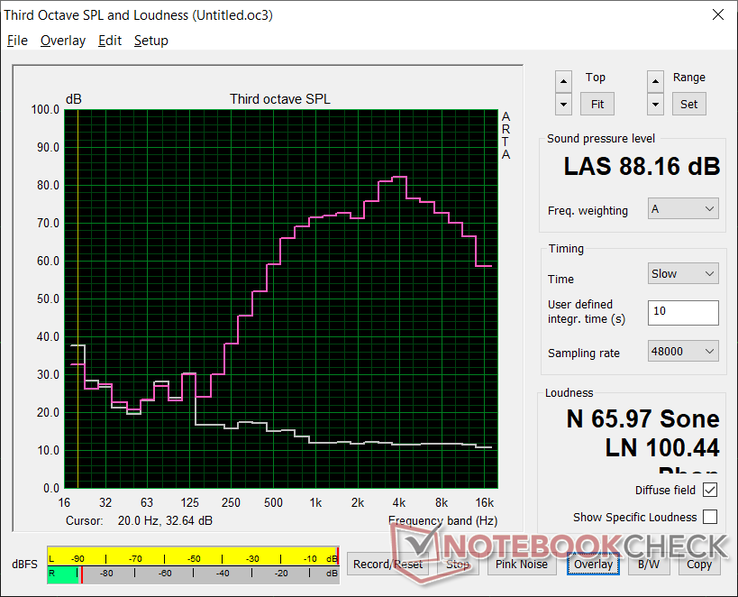
Doogee X95 Pro audio analysis
(+) | speakers can play relatively loud (88.2 dB)
Bass 100 - 315 Hz
(-) | nearly no bass - on average 37.4% lower than median
(±) | linearity of bass is average (11% delta to prev. frequency)
Mids 400 - 2000 Hz
(±) | reduced mids - on average 5.1% lower than median
(+) | mids are linear (6.2% delta to prev. frequency)
Highs 2 - 16 kHz
(±) | higher highs - on average 7% higher than median
(+) | highs are linear (5.8% delta to prev. frequency)
Overall 100 - 16.000 Hz
(±) | linearity of overall sound is average (24.5% difference to median)
Compared to same class
» 53% of all tested devices in this class were better, 7% similar, 40% worse
» The best had a delta of 12%, average was 38%, worst was 134%
Compared to all devices tested
» 70% of all tested devices were better, 6% similar, 24% worse
» The best had a delta of 4%, average was 25%, worst was 134%
Apple MacBook 12 (Early 2016) 1.1 GHz audio analysis
(+) | speakers can play relatively loud (83.6 dB)
Bass 100 - 315 Hz
(±) | reduced bass - on average 11.3% lower than median
(±) | linearity of bass is average (14.2% delta to prev. frequency)
Mids 400 - 2000 Hz
(+) | balanced mids - only 2.4% away from median
(+) | mids are linear (5.5% delta to prev. frequency)
Highs 2 - 16 kHz
(+) | balanced highs - only 2% away from median
(+) | highs are linear (4.5% delta to prev. frequency)
Overall 100 - 16.000 Hz
(+) | overall sound is linear (10.2% difference to median)
Compared to same class
» 5% of all tested devices in this class were better, 2% similar, 93% worse
» The best had a delta of 5%, average was 19%, worst was 53%
Compared to all devices tested
» 3% of all tested devices were better, 1% similar, 96% worse
» The best had a delta of 4%, average was 25%, worst was 134%
Energy Management
Power Consumption
Overall power consumption is very low even when running high processing loads. We're able to record a maximum of just 3.8 W compared to almost 3x that on the OnePlus 9. Of course, the latter is also significantly faster and more expensive. The difference between minimum and maximum brightness is about 1.5 W.
| Off / Standby | |
| Idle | |
| Load |
|
| Doogee X95 Pro Helio A20 MT6761D, PowerVR GE8300, 32 GB eMMC Flash, IPS, 1600x720, 6.52 | OnePlus 9 SD 888 5G, Adreno 660, 256 GB UFS 3.1 Flash, AMOLED, 2400x1080, 6.55 | Motorola Moto G30 SD 662, Adreno 610, 128 GB eMMC Flash, LCD IPS, 1600x720, 6.50 | Oppo Find X3 Lite SD 765G, Adreno 620, 128 GB UFS 2.1 Flash, OLED, 2400x1080, 6.43 | Apple iPhone 12 Pro A14, A14 Bionic GPU, 256 GB NVMe, OLED, 2532x1170, 6.10 | Nokia 5.4 SD 662, Adreno 610, 128 GB eMMC Flash, IPS LCD, 1560x720, 6.39 | |
|---|---|---|---|---|---|---|
| Power Consumption | -61% | -38% | -20% | 16% | -6% | |
| Idle Minimum * | 0.5 | 0.9 -80% | 0.8 -60% | 0.92 -84% | 0.64 -28% | 0.49 2% |
| Idle Average * | 2 | 1.7 15% | 1.5 25% | 1.97 1% | 1.22 39% | 1.91 4% |
| Idle Maximum * | 2.7 | 2.7 -0% | 1.8 33% | 1.98 27% | 1.24 54% | 1.94 28% |
| Load Average * | 3.7 | 5.4 -46% | 6.1 -65% | 3.33 10% | 3.04 18% | 3.57 4% |
| Load Maximum * | 3.8 | 11.1 -192% | 8.4 -121% | 5.77 -52% | 3.86 -2% | 6.42 -69% |
* ... smaller is better
Battery Life
Runtimes are excellent at almost 14.5 hours of real-world WLAN use when the display is set to 150 nits. Charging from empty to full capacity is slow, however, at several hours.
| Doogee X95 Pro Helio A20 MT6761D, PowerVR GE8300, Wh | OnePlus 9 SD 888 5G, Adreno 660, Wh | Motorola Moto G30 SD 662, Adreno 610, Wh | Oppo Find X3 Lite SD 765G, Adreno 620, Wh | Blackview A80 Plus Helio P22 MT6762, PowerVR GE8320, Wh | Motorola Moto E7 Helio G25, PowerVR GE8320, Wh | |
|---|---|---|---|---|---|---|
| Battery Runtime | -3% | 22% | -5% | 7% | -1% | |
| WiFi v1.3 | 879 | 854 -3% | 1069 22% | 834 -5% | 943 7% | 867 -1% |
| Reader / Idle | 1623 | 2336 | ||||
| Load | 168 | 219 |
Pros
Cons
Verdict
The Doogee X95 Pro works well for light web browsing, light apps, video and music streaming, and the occasional pictures. Users will be surprised by the large display and quality of the pictures for such an inexpensive smartphone.
Unfortunately, the processor is so slow that most games and even moderate multi-tasking will bring the whole smartphone down to a crawl. If you're not a heavy smartphone user at all, then the Doogee will be appealing.
Price and availability
Overseas retailers like AliExpress have the Doogee X95 Pro on sale for about $100 USD or less. Amazon does not have it in stock as of this writing.
Doogee X95 Pro
-
04/02/2021 v7
Allen Ngo


 Deutsch
Deutsch English
English Español
Español Français
Français Italiano
Italiano Nederlands
Nederlands Polski
Polski Português
Português Русский
Русский Türkçe
Türkçe Svenska
Svenska Chinese
Chinese Magyar
Magyar